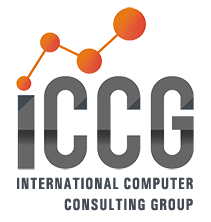Even when your warehouse operations seem to be running smoothly, there is always room for improvement and a need to stay up to date with innovation. While steps are taken to keep warehouse operations at peak performance, when fulfilment times and levels are jeopardized, it’s still up to you and your team to race to recover, to ensure actions to get back on track are taken correctly so that product can make its way out the door, and time is always working against you.
If your organization previously reviewed and dismissed the value of moving your warehouse management system (WMS) to the cloud, it’s time to reevaluate. Decisions that seemed to make sense last year or even last quarter, likely look very different with new challenges emerging over the past several months. By empowering critical systems like a WMS with cloud capabilities, your organization can scale quickly, maximize productivity, and minimize outages and downtime to prevent bringing the company’s mission-critical operations to its knees.
Read More
Topics: Digital Transformation, ERP, Manufacturing, Distribution, Rentals & Equipment, Warehouse Management Systems, Fashion & Apparel, Industrial Manufacturing, Digital Manufacturing, Infor M3 ERP, Enterprise Software, Retail Supply Chain, WMS
1. Are we organizationally ready for significant change?
Organizations are only as good as their people, and manufacturers must look carefully at whether they have the right people and culture to support a different way of doing things. It is the people who will be responsible for implementing change, and they should be ready, committed, and on board with any type of transformation plan.
An organization’s culture can make or break a digital transformation project and “organizational change management” is one of the key components of such a project. Organizations should aim for an inclusive culture where people feel like they are key contributors to the company’s future success.
To achieve this, management teams should encourage a culture of openness to help employees step forward with their ideas. All change, and all transformation, starts with an idea – so it’s important for people to feel empowered to put their ideas out in the open.
Read More
Topics: Digital Transformation, ERP, Manufacturing, Distribution, Rentals & Equipment, Supply Chain, Fashion & Apparel, Industrial Manufacturing, Digital Manufacturing, Infor M3 ERP, Enterprise Software, Retail Supply Chain, WMS, Supply Chain Management
Digitizing core processes in combination with trading partner connectivity, helps supply chain leaders increase responsiveness and adaptability. As more organizations look to remove manual tasks from their operations, the ability to update suppliers and trading partners in real-time allows supply chain processes to become more efficient. Here are three scenarios where moving to a network platform have helped companies generate additional value across their supply chain.
- A footwear provider experiencing rapid growth realized spreadsheets and manual processes were no longer sufficient to support increase demand and future progression. The brand digitally transformed sourcing, procurement, accounts payable, finance, and supplier management processes to support scale. The ability to digitally collaborate on orders, invoices, settlements, and ASN creation was foundational to the transformation. Witnessing 4X growth, the company today has 99.8% invoice accuracy and spends approximately 30 minutes per day processing invoices.
- A major global sports apparel brand sought to solidify the health of its supply base by ensuring access to capital. Utilizing a multi-enterprise network allowed the company to connect all parties and digitized document flow, enabling automated financing and settlement. A diverse portfolio of finance providers was plugged in to create a significant pool of credit and programs to meet varying needs. In doing so, the brand was able to enhance the financial health of its suppliers while deploying its own capital preservation program.
- An outdoor gear manufacturer having automated its PO, invoice, and settlement processes to generate efficiency was seeking further avenues to improve margins. It leveraged existing transaction data to auto-populate ASNs and packing and shipping instructions, enabling direct shipments from the factory. As a result, plans for new distribution center were deemed no longer necessary due to increased efficiency.
Read More
Topics: ERP, Manufacturing, Distribution, Rentals & Equipment, Supply Chain, Fashion & Apparel, Infor M3 ERP, Enterprise Software, Retail Supply Chain, WMS, Supply Chain Management
Know you want to transform but don't know where to start? Want to gain $9-12 for every dollar you spend? Read on to find out why starting with your people is the best first step to prioritizing digital transformation projects.
Digital transformation is at the top of the to-do lists of most companies, but one topic that is often missing from a discussion on digital transformation is which areas to prioritize. Most businesses can’t afford to completely overhaul a core function of the enterprise top to bottom, along with the technology that supports it, at any one time. Instead, they’ll target specific areas for transformation. That approach minimizes disruption to the business, keeps costs manageable, and helps the business apply lessons learned to future transformation projects. The question, though, is which areas to target first?
Read More
Topics: Digital Transformation, ERP, Manufacturing, Distribution, Rentals & Equipment, Supply Chain, Fashion & Apparel, Industrial Manufacturing, Digital Manufacturing, Infor M3 ERP, Enterprise Software, Retail Supply Chain, WMS, Supply Chain Management
For years, digitization has been considered an optional strategy by many companies, thus resulting in static and disconnected buyer-supplier collaboration points across supply chains. For many organizations, processes continue to be highly manual across fragmented systems, resulting in inefficient, error prone workflows.
Reliance upon Excel®, email, and phone calls remains common across a staggeringly significant amount of business, thereby resulting in delays, non-compliance, and friction between buyer and seller. Time and resources lost synchronizing simple concepts like purchase order confirmations, negotiation, documentary compliance, and invoice approvals cripples flexibility and agility, all while locking up millions, if not billions in working capital.
Anywhere paper or manual processes exist a lack of visibility follows, leaving missed opportunities to harness real-time supply chain data that optimizes decisions and mitigate risks.
Read More
Topics: ERP, Manufacturing, Distribution, Rentals & Equipment, Supply Chain, Fashion & Apparel, Infor M3 ERP, Enterprise Software, Retail Supply Chain, WMS, Supply Chain Management
When it comes to ensuring supply chain health, there are three key approaches your organization can do to improve processes and build resiliency into your network. Not only will this help you minimize uncertainty during times of disruption, it will also help streamline improvements during times of prosperity.
Supply chain essential #1: Digital documents, data, and settlements
Companies must focus on network connectivity and process automation to drive agility and responsiveness while continually investing in predictive and proactive sense and respond capabilities.
Economic sustainability includes multiple key components starting with digital connectivity and collaboration as the digitization of documents and workflows enables speed and agility. Multi-enterprise collaboration enables strategic programs such as providing suppliers access to capital through a multi-bank network. This helps the entire supply chain endure dynamic liquidity shortages that often stem from a crisis and a period of economic recovery.
Read More
Topics: ERP, Manufacturing, Distribution, Rentals & Equipment, Supply Chain, Fashion & Apparel, Infor M3 ERP, Enterprise Software, Retail Supply Chain, WMS, Supply Chain Management
Equipment companies used to compete mostly on product and price. But that was before customers could get whatever they needed with just a click of a button. With reduced differentiation and diminishing sales margins, equipment companies are shifting the focus beyond product and price to what problems they can solve for their customers. Today’s equipment companies compete on service.
Which means that one of the biggest challenges equipment OEMs, dealers, rental, and service organizations face today is how to increase customer service levels. It’s this push for finding new and better ways to serve customer needs that are at the core of many of the key issues that are impacting the equipment industry today.
Read on for a deep dive into the top issues facing the equipment industry and how addressing these issues can help companies better compete on customer service.
Read More
Topics: Manufacturing, Rentals & Equipment, Equipment, Infor, CloudSuite Equipment Rental, Enterprise Software, CloudSuite Equipment, Infor CloudSuite Equipment
To keep up with lofty yet mandatory customer expectations, your supply chain can’t afford to stop investing in technology that improves processes, connects business partners and IoT data, and uses machine learning algorithms to improve business outcomes. If the people tasked with running your supply chain are relying on poorly built or outdated systems filled with data quality issues, then they need new technology solutions and strategies to overcome these shortcomings to create true value.
As you strive to balance cost while simultaneously improve your customer service, you are no doubt confronting issues that require better collaboration amongst your group as well as the numerous companies you interact with daily. The days of each department or company working on an island while hoping groups further downstream can correct any mistakes are long gone.
Nowadays, those of us in the supply chain space realize the need for ongoing collaboration with everyone who touches our supply chain. This can take the form of sharing data around forecasts, inventory positions, capacity plans, order status (both at rest and in-transit), as well as visibility into shipments.
Read More
Topics: ERP, Manufacturing, Distribution, Rentals & Equipment, Supply Chain, Fashion & Apparel, Infor M3 ERP, Enterprise Software, Retail Supply Chain, WMS, Supply Chain Management
Competitive supply chains must enable a new level of coordinated performance that creates a high-fidelity picture of in-process flows across your extended network. Building the continuous supply chain supports contextual deviations, conveys alerts and drives continuous planning via sense & respond capabilities.
Optimizing multi-party business processes
Supply chains are complex networks where over 80% of the data and processes sits within partner systems. To see and act on the latest picture of your supply chain, your company needs that data from each of your partners, but the problem is most companies rely solely on an enterprise-centric approach to solve a multi-enterprise problem.
The only way to overcome those limitations is to adopt a "network approach." Connecting all partners to shared processes, data and metrics managed within a single platform creates a single version of truth for all parties. This allows supply chains to eliminate the data silos and inherent latency in order to reduce the root causes of friction, variability and costs in today’s supply chains, both internally and externally.
Read More
Topics: ERP, Manufacturing, Distribution, Rentals & Equipment, Supply Chain, Fashion & Apparel, Infor M3 ERP, Enterprise Software, Retail Supply Chain, WMS, Supply Chain Management
I recently posted on LinkedIn to ask my colleagues for advice on how to manage my exploding workload. According to the latest Mental Health Index: U.S. Worker Edition from Total Brain, between November and December there was a 48% increase in the risk of depression—a risk level not seen since this past spring. Further, employees’ focus dropped 62%—a record low since the inception of the research in February 2020. While remote working has its benefits, most of us would argue that we need to make some significant changes for this style of working to be sustainable. Below are a few of the suggestions and ideas from professionals that commented on the post.
Read More
Topics: ERP, Manufacturing, Food & Beverage, Distribution, Rentals & Equipment, Supply Chain, Fashion & Apparel, Infor M3 ERP, Enterprise Software, Retail Supply Chain, WMS, Supply Chain Management


.jpg)








